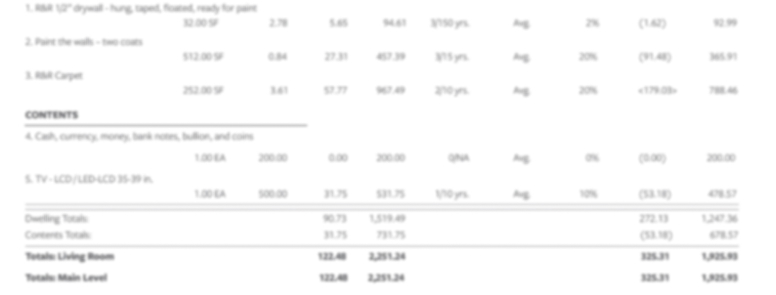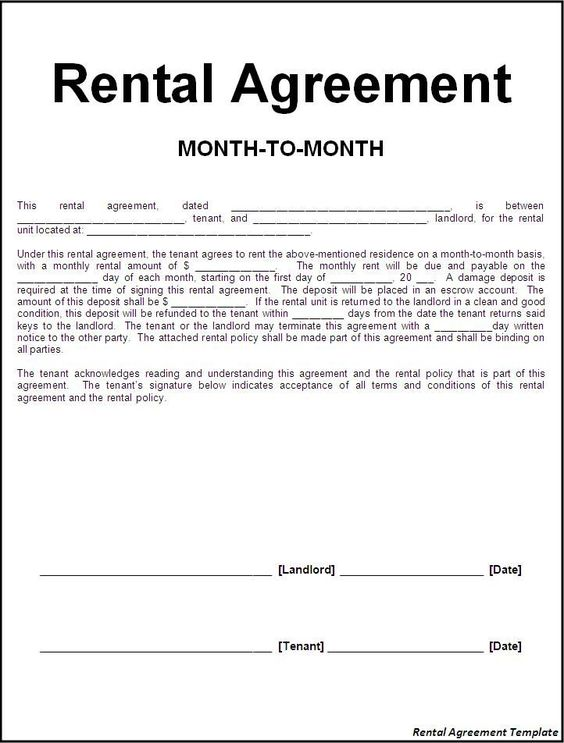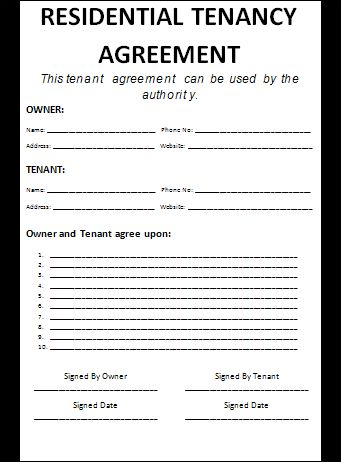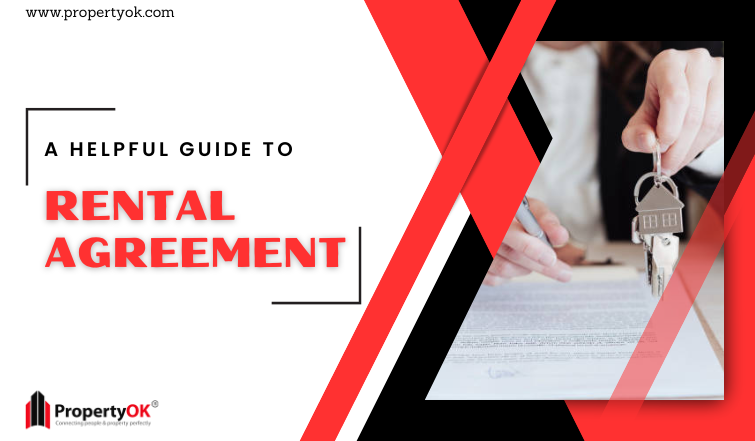A rental agreement should be read carefully before signing; it is essential to understand precisely what it means and what obligations you are taking on. To help make this process easier, this article will provide a helpful guide to understanding your rental agreement and what it signifies. Welcome to a one-of-a-kind guide where we do more than scratch the surface. Unveiling the mysteries of your rental agreement is our mission, empowering you with the insights to make well-informed choices.
From unravelling legal jargon to recognising potential red flags, we equip you to conquer your lease with confidence. Embrace the knowledge that transforms you to make your new dwelling truly feel like home!
Looking for expert advice on the current real estate market? Get in touch with us now.

What is a Rental Agreement?
When you sign a rental agreement, you enter into a legally binding contract with your landlord. This contract outlines the terms of your tenancy, including how long you will rent the property, how much you will pay, and what the rules and regulations of the property are. Therefore, it is important to read and understand your rental agreement before signing it, as it will be enforceable in court if there are any disputes between you and your landlord.

In this guide, we will explain what a typical rental agreement looks like, what the different clauses in the agreement mean, and give some tips on how to negotiate the terms of your tenancy with your landlord. By understanding your rental agreement, you can be sure you are getting the best deal possible on your new home.
Types of Rental Agreements
There are different types of rental agreements that you should be aware of before signing a lease. Here is a helpful guide to understanding your rental agreement and what it signifies.
Fixed-term tenancy: This type of tenancy agreement is for a set period, typically six or twelve months. The terms and conditions of the agreement can only be changed during this time if both parties agree.
Month-to-month tenancy: This agreement gives either party the right to terminate the tenancy with one month’s notice. The terms and conditions can be changed with thirty days’ notice.
Tenancy at will: With proper notice, either party can terminate the tenancy at any time. Holdover tenancy occurs when a tenant remains in the rental unit after their lease has expired. The landlord can then treat the tenant as a month-to-month tenant or evict them.
Uncover new perspectives and insights regarding rental yield in India by reading this blog:
RENTAL YIELD IN INDIA: WHY IGNORING THESE RED FLAGS COULD COST YOU BIG TIME
What to Look For in Your Rental Agreement
When signing a rental agreement, you must understand what you agree to. Either party can terminate the tenancy at any time for any reason. Holdover tenancies occur when a tenant remains in a rental unit after their lease expires. Therefore, it is important to read and understand the agreement before signing it.

Your rental agreement should include the following:
1. The lease length: Most leases are for one year, but some may be for shorter or longer periods. Make sure you know how long you are committed to the lease.
2. The rent amount and due date: The rent amount should be clearly stated in the agreement and when it is due each month.
3. Utilities: Some landlords include utilities in the rent, while others do not. If utilities are not included, determine who will be responsible for paying them (tenant or landlord).
4. Repairs and maintenance: The agreement should state who is responsible for repairs and maintenance on the property (tenant or landlord).
5. Subletting: Some landlords do not allow subletting, while others do. If subletting is permitted, find any restrictions that may apply (such as requiring approval from the landlord).
6. Pets: Find out if pets are allowed on the property and, if so, what type of pets and how many. There may also be restrictions on certain breeds of dogs or other animals.
Important Clauses and Sections of a Rental Agreement
When you sign a rental agreement, you enter into a legally binding contract with your landlord. Therefore, understanding all clauses and sections in your agreement is important to know your rights and responsibilities. Here are some of the most important clauses and sections in a typical rental agreement:
-The lease term is the time you agree to rent the property. Read this section carefully to know how long you are committed to the lease.
-The rent amount is how much you will be responsible for paying each month. Be sure to read this section carefully to know how much rent you will need to budget for.
-The security deposit: This is a deposit typically equal to one month’s rent and is used to protect the landlord in case of damage to the property or if you default on your lease. You’ll need to put down a security deposit, so read this section carefully.
-The utility bills: This section outlines which utilities (electricity, water, gas, etc.) are included in your rental price and which ones you will be responsible for paying separately. Read this section carefully to know what kinds of bills you must budget.
Take a deep dive into the legalities of a release deed by reading the blog below:
THE LEGALITIES OF A RELEASE DEED: WHAT YOU NEED TO KNOW BEFORE SIGNING IN INDIA
How to Negotiate Terms with Your Landlord
When renting an apartment or home, it’s important to understand your rights as a tenant. Therefore, one of the most important aspects of your rental agreement is the terms you agree to with your landlord. You can negotiate terms with your landlord by following these tips:

1. Understand what you’re trying to achieve. Whether you’re looking for a lower rent price or more lenient late payment terms, it’s important to know what you want before negotiating with your landlord.
2. Do your research. Be sure to know your area’s current market value for rent prices. That will help you determine if your requested changes are realistic.
3. Be prepared to compromise. In most cases, landlords are willing to negotiate on certain terms but not others. So you may have to give something up to get what you want from the negotiation.
4. Put it in writing. Once you’ve agreed on new terms with your landlord, get everything in writing so everything is clear later.
Regarding your rental agreement, you should keep a few things in mind to make the most out of it. For starters, read over your agreement thoroughly so that you understand all of the terms and conditions. As a tenant, you should also know your rights and responsibilities and your landlord’s.
In addition, it is helpful to understand what is included in your rental agreement. For instance, most agreements will specify the length of the lease, the monthly rent amount, any deposits or fees that are required, and any rules or regulations that apply to the property. You can avoid any potential problems or misunderstandings by understanding this information upfront.
Finally, remember that your rental agreement is a legally binding document. That means that if you or your landlord violate any of the terms of the agreement, serious consequences could result. Therefore, if you have any questions or concerns about your agreement, raise them with your landlord before signing on the dotted line.
Learn about the dangers of ignoring a conveyance deed by reading this blog:
THE DANGERS OF IGNORING A CONVEYANCE DEED AND WHAT TO DO NEXT
Rental Agreement Templates
A rental agreement template is a pre-designed document that serves as a framework for creating a lease contract between a landlord and a tenant. It contains standardised clauses and provisions commonly found in most rental agreements. These templates are created to save time and effort for both parties involved in the leasing process.
The template typically includes essential details such as the names of the landlord and tenant, property address, rent amount, security deposit, lease term (start and end dates), rules for occupancy, maintenance responsibilities, and procedures for dispute resolution, among other relevant information.

Rental Agreement Template 1
Using a rental agreement template ensures that crucial aspects of the lease are covered and provides a clear understanding of the terms and conditions for both parties. However, it’s important to remember that templates can be customised to suit specific rental arrangements and local legal requirements. This flexibility allows landlords and tenants to add or modify clauses according to their unique needs as long as the changes comply with local rental laws and regulations. Using rental agreement templates, tenants and landlords can establish a well-defined, legally binding contract that fosters a smooth and harmonious renting experience.

Rental Agreement Template 2
Wrap-up
We hope this guide has helped you understand your rental agreement and its significance for you and your landlord. It is important to remember that a rental agreement can protect both parties from potential issues down the line, and it is prudent to make sure you are informed of your rights and obligations as a tenant before signing anything.
Regular communication between yourself and your landlord will ensure that problems or questions can be addressed quickly, so stay on top of things while living in an apartment or house!
Frequently Asked Questions
1. Is rent agreement registration mandatory?
Rent agreement registration is mandatory in some states in India, as it is a legal requirement under the Indian Registration Act 1908. It serves as proof of the tenancy agreement and protects the rights of both the landlord and the tenant. Refrain from registering the agreement to avoid disputes and legal complications. However, it’s always good to check the specific laws of the state where you live.
2. What happens if either party violates the rental agreement?
If either the tenant or landlord breaches the rental agreement, there can be legal consequences. Common violations include non-payment of rent, unauthorised subletting, property damage, or failure to uphold specific rules outlined in the agreement.
For tenants, violation of the rental agreement may result in eviction or forfeiture of the security deposit. For landlords, it could lead to legal action to recover damages or evict the tenant.
It’s essential for both parties to communicate and resolve disputes amicably. If an issue arises, consider mediation or legal advice to reach a fair resolution.
3. Can I make changes or negotiate terms in the rental agreement?
Yes, in many cases, rental agreements are negotiable to some extent. Landlords may be open to discussing certain terms, such as the lease duration, pet policy, or specific maintenance responsibilities. However, not all landlords may be willing to make changes, especially if they have standardised lease agreements. It’s crucial to communicate openly and respectfully with the landlord to find common ground and reach an agreement that suits both parties.

 Thank You
Thank You




